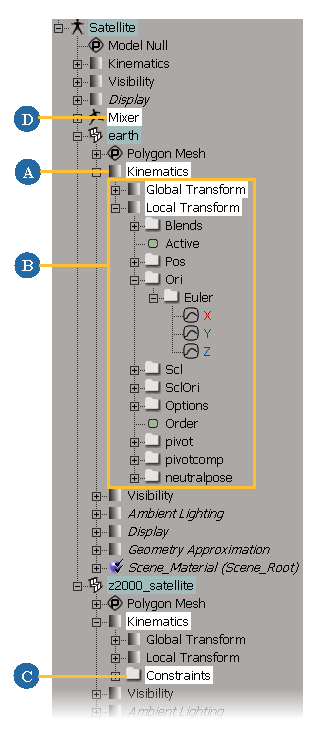There are many ways in which an object and its animation properties are displayed, depending on the type of animation that you are doing.
The explorer is the most useful tool for finding any type of animation data:
| A |
The most common way of animating an object is to transform it, which means to scale, rotate, or translate it. When you animate an object's transformation, you will find the information in the object's Kinematics node. Kinematics in this case means "movement" in general, not "inverse or forward kinematics" that is used for skeletons. |
| B |
In an object's Kinematics node, you will find the Global Transform and the Local Transform nodes. Each of these nodes contain the scaling (Scl), rotation (Ori > Euler), and translation (Pos) folders that, in turn, contain the parameters for each X, Y, and Z axis. These parameters (and any other animatable parameter) can be animated with keys, expressions, linked parameters, constraints, scripted operators, and actions. For more information, see Animating Local versus Global Transformations |
| C |
If the object is constrained to another scene element, you can find the constraint operators in the object's Kinematics > Constraints node. For more information, see Viewing Constraints and Their Information. |
| D |
If you store any type of animation on an object in an action source, or deformed shapes in a shape source, the Mixer node appears under the object's model. In this node, you can find all the sources, clips, and tracks relating to animation data that can be used in the animation mixer. For more information, see The Mixer Node [Nonlinear Animation in the Animation Mixer]. |
